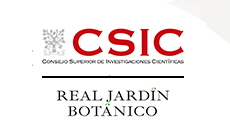Scientific Area
Perspective of Change in Abundance of Floral Species Utilized by Communities and their Spatial Configuration
ID: 613 / 315
Category: Abstract
Track: Pending
Proposed Symposium Title: Perspective of Change in Abundance of Floral Species Utilized by Communities and their Spatial Configuration
Authors:
LEAJIM A. VILLANUEVA1, MA. VICTORIA O. ESPALDON2, INOCENCIO E. BUOT, JR.3, MARK DONDI M. ARBOLEDA4, AGNES C. ROLA5
Affiliations: 1 Foundation for the Philippine Environment, Quezon City, Philippines 2 School of Environmental Science and Management, University of the Philippines Los Banos, Laguna, Philippines 3 Institute of Biological Sciences, University of the Philippines Los Banos, Laguna, Philippines 4 School of Environmental Science and Management, University of the Philippines Los Banos, Laguna, Philippines 5 College of Public Affairs, University of the Philippines Los Banos, Laguna, Philippines
Abstract:
The Polillo Islands in the Philippines is one of the 228 Key Biodiversity Areas in an archipelago of more than 7,107 islands and islets. An island which is an important socio-ecological system (SES), the various provisioning services of the seascape ecosystem is provided by associated diverse floral species, 52 of which are directly or indirectly utilized for various purposes including for their medicinal (i.e Antidesma bunius, Barringtonia asiatica, Bruguiera conjugate, Diospyros multiflora, Hanguana malayana, Hernandia ovigera, Intsia bijuga, Jatropha curcas), domestic (Avicennia officinalis, Casearia fuliginosa, Diospyros discolor) and nutrition (Caulerpa lentillifera, Ceanothus asiaticus, Diospyros discolor). The change in abundance through community perspective shows that most (65.38%) are perceived to have been in decline including Agave americana, Avicennia officinalis, Barringtonia asiatica, Basella alba, Bruguiera conjugate, Calophyllum inophyllum, Calophyllum obliquinervium, Casearia fuliginosa followed by 23.07% perceived to be stable (i.e Aegiceras corniculatum, Antidesma bunius, Bruguiera cylindrical, Ceanothus asiaticus, Dentella repens) and 11.58% were believed to have been increasing (i.e Alstonia macrophylla, Caulerpa lentillifera, Cymbidium finlaysonianum). Overlaid with spatial distribution and fragmentation analysis, there is a declining seascape and increasing fragmentation which could have contributed to the change in abundance of the species utilized by communities within the study site. The seascape elements changed with a loss of natural seascape and gain for human habitation and agriculture as well as the reduction of complexity with the changing of beach forest and mangrove areas towards lesser diverse ecosystems as part of the ecosystem response to perturbation where grasses and shrubland replaced beach forest and mangroves. The reduction of natural seascape translates to changing configurations measured by fragmentation indices including Percentage of Landscape (PLAND), Largest Patch Index (LPI), Landscape Shape Index (LSI), Proportion of Like Adjacencies (PLADJ), Patch Cohesion Index (COHESION), Effective Mesh Size (MESH).




